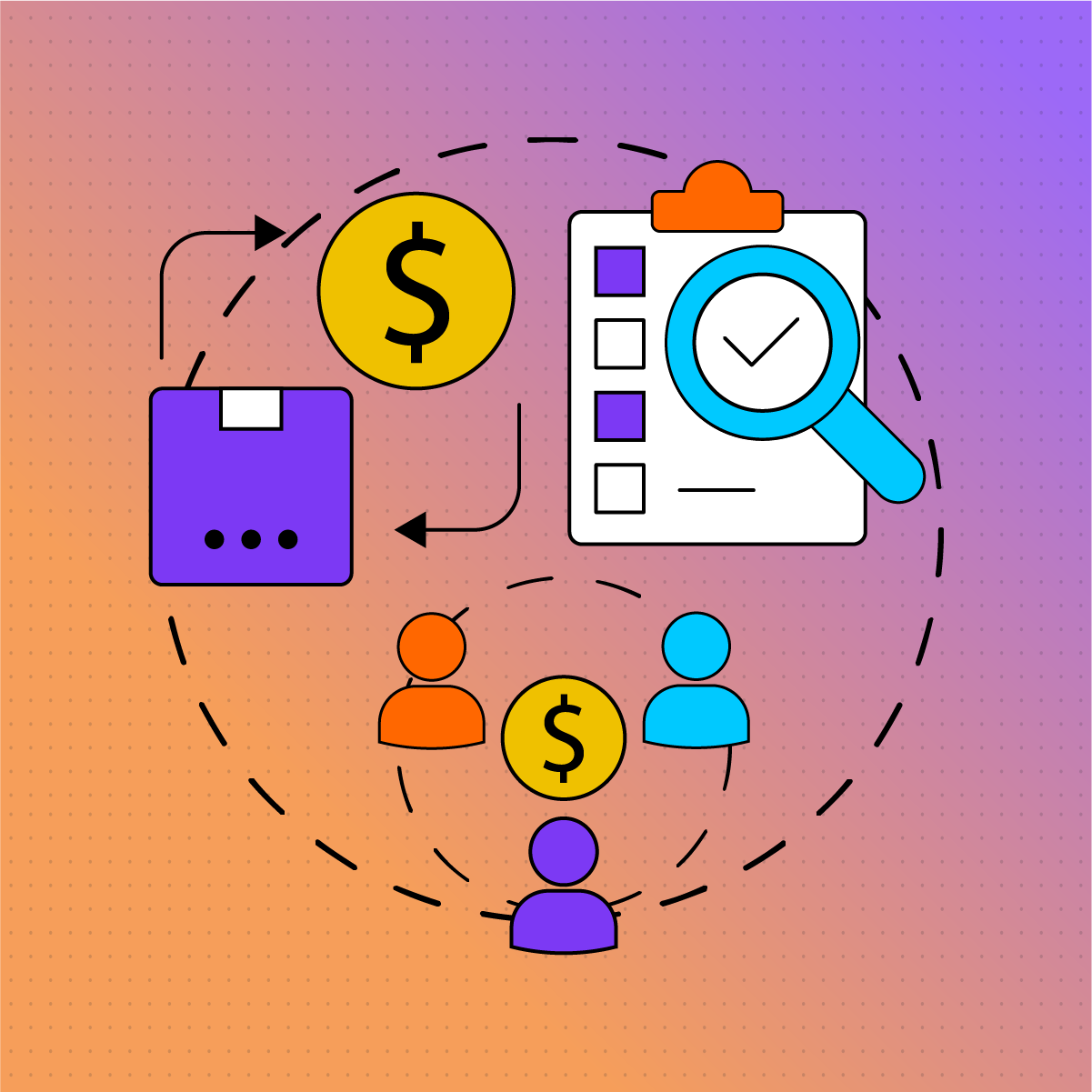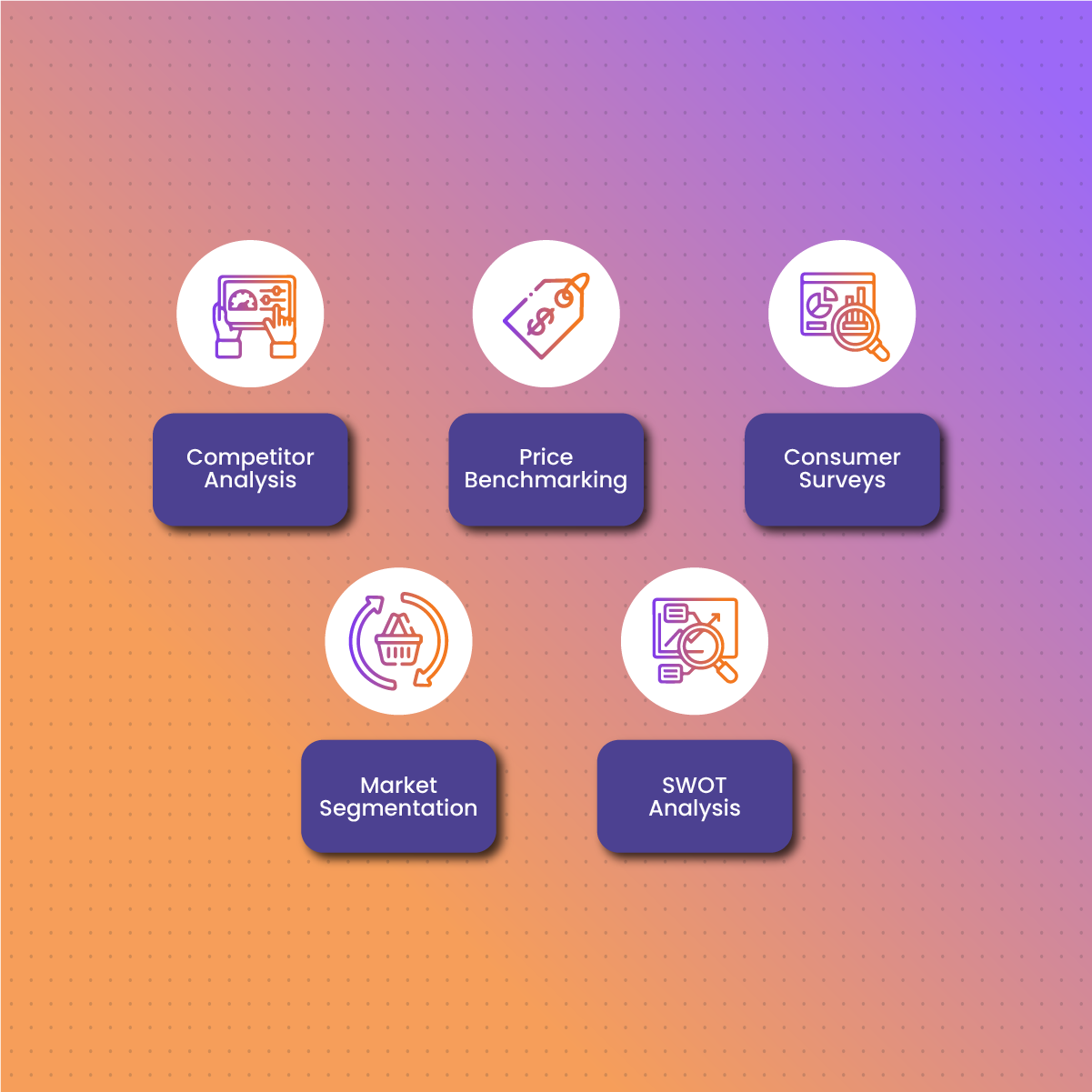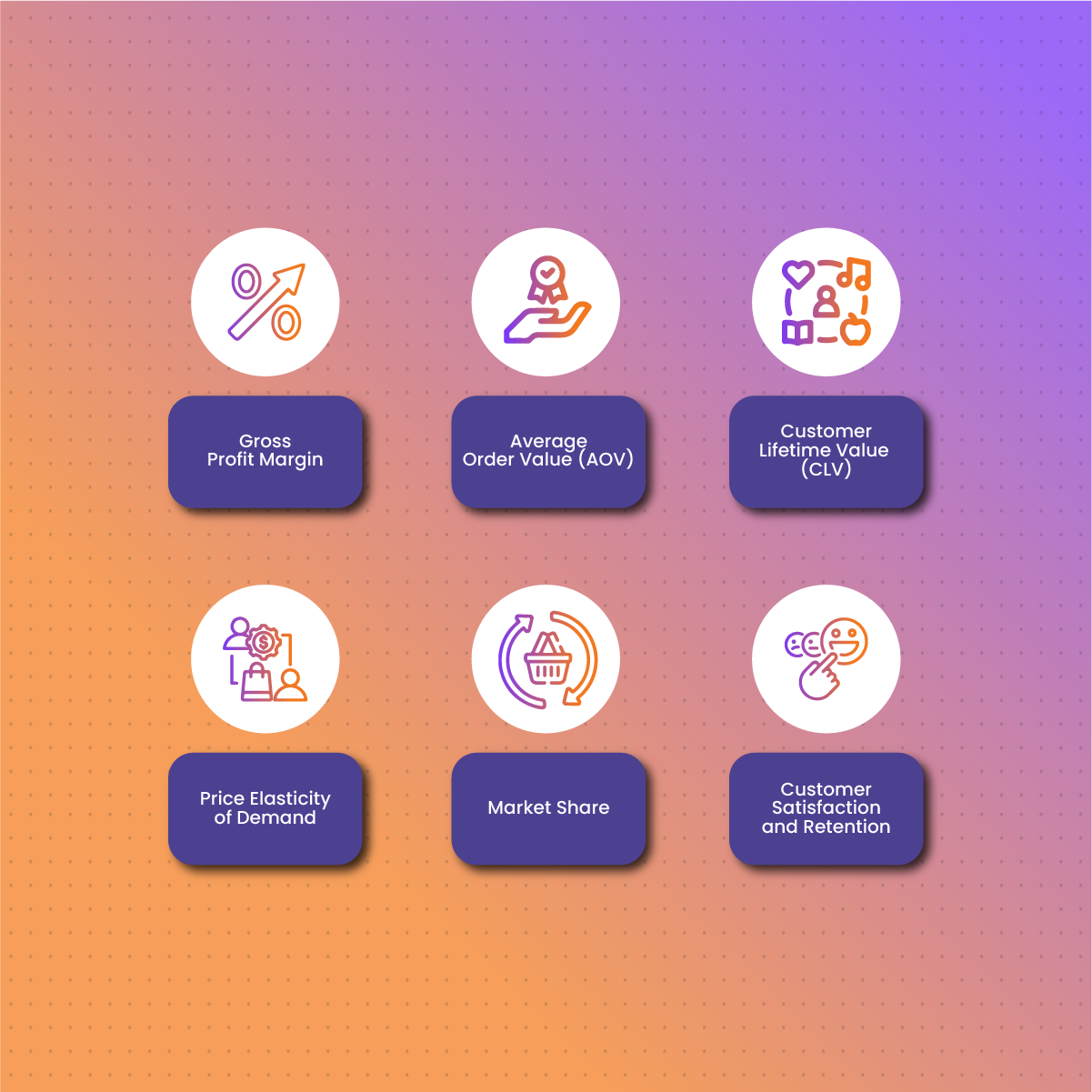Introduction
In the retail world, every shopper is on the lookout for the best deal, competitive pricing stands as a cornerstone for success. But what exactly does retail competitive pricing strategies mean, and why is it so crucial?
It is important to mention that strategies play a pivotal role in shaping consumer behavior, and determine the success of businesses. Retailers face intense competition, both online and offline, making it essential to develop and implement effective competitive pricing strategies to survive in the market.
From small local shops to multinational corporations, retailers across the globe are constantly refining their pricing tactics to attract customers, drive sales, and maximize business benefits. In this article, we will talk fully about retail competitive pricing strategies. More so, explore the various approaches retailers employ to gain a competitive edge in the market.
What to Know About Competitive Pricing
Competitive pricing is a strategic approach where retailers set prices for their products or services based on the prices charged by their competitors. Instead of blindly determining prices, retailers closely monitor the pricing strategies of their rivals and adjust their own prices accordingly. The ultimate goal of competitive pricing is to remain competitive in the market while maximizing profitability and attracting customers.
At its best, competitive pricing is about understanding the dynamics of supply and demand in the market and strategically positioning your prices to capture a share of that demand. It involves analyzing factors such as production costs, consumer preferences, and competitor pricing strategies to arrive at optimal price points for your offerings.
Importance of knowing your competitors
Knowing your competitors is essential for developing effective retail competitive pricing strategies. By understanding what your competitors are charging for similar products or services, you can make informed decisions about your own pricing strategy.
Here’s why knowing your competitors is important:
Market Differentiation
Understanding competitor pricing allows you to differentiate your products or services based on factors other than price, such as quality, features, or customer service.
Strategic Positioning
Also, analyzing competitor pricing helps you identify gaps in the market where you can position your offerings at a competitive advantage.
Price Sensitivity
Knowing your competitors’ prices helps you gauge the price sensitivity of your target market and adjust your pricing strategy accordingly.
Profitability
By monitoring competitor pricing, you can identify opportunities to increase profit margins or capture market share by adjusting your prices strategically.
In summary, knowing your competitors allows you to navigate the competitive environment more effectively and make informed decisions that drive business growth.
Market Research and Analysis Techniques
Effective market research and analysis are essential components of understanding retail competitive pricing. Here are some techniques to consider:
Competitor Analysis
Identify key competitors in your industry or niche and analyze their pricing strategies, product offerings, and target markets. Tools such as competitive intelligence software can provide valuable insights into competitor pricing tactics.
Price Benchmarking
Conduct regular price benchmarking exercises to compare your prices with those of your competitors. This can help identify opportunities for price adjustments and optimization.
Consumer Surveys
Gather feedback from your target audience through surveys or focus groups to understand their price sensitivity, preferences, and perceptions of value.
Market Segmentation
Segment your target market based on factors such as demographics, psychographics, and purchasing behavior. This allows you to tailor your pricing strategies to different customer segments effectively.
SWOT Analysis
Conduct a SWOT (Strengths, Weaknesses, Opportunities, Threats) analysis to identify internal strengths and weaknesses as well as external opportunities and threats in the market. This can inform your pricing strategy by highlighting areas where you can capitalize on competitive advantages or mitigate potential threats.
These techniques help retailers to develop effective competitive pricing strategies.
Key Components of Retail Competitive Pricing Strategies
There are essential components of retail competitive pricing strategies. All these key components are highlighted below:
Market Research
First, start by identifying direct and indirect competitors in your industry or niche. Direct competitors offer similar products or services, while indirect competitors may provide alternative solutions to the same customer needs.
Once you have identified your competitors, analyze their pricing strategies. Pay attention to factors such as pricing tiers, discount offers, and promotional campaigns. Understanding how your competitors price their products can help you make informed pricing decisions.
Then, conduct market research to understand your target customers’ preferences, needs, and purchasing behavior. Factors such as price sensitivity, brand loyalty, and product preferences can influence how customers perceive and respond to pricing strategies.
Value-Based Pricing
For this, identify the unique value proposition of your products or services. What sets them apart from competitors? Whether it is superior quality, innovative features, or exceptional customer service, understanding your value proposition is key to pricing effectively.
Then, price your products based on the value they provide to customers, rather than simply covering production costs. Customers are willing to pay more for products they perceive as valuable, so focus on communicating and reinforcing the value of your offerings.
Dynamic Pricing
This involves implementing dynamic pricing strategies that allow you to adjust prices in real-time based on factors such as demand, competition, and seasonality. By monitoring market conditions and customer behavior, you can optimize prices to maximize revenue and profitability.
In addition, consider various factors like competitor prices, inventory levels, consumer demand, and external market conditions when making dynamic pricing decisions. More so, use pricing automation tools and algorithms to streamline the dynamic pricing process.
Price Matching
One of the significance of price matching is that it reassures customers that they’re getting the best deal. By communicating your price matching policy clearly, it makes it easy for customers to redeem offers.
Although price matching can help build trust and loyalty with customers, it also carries risks such as margin erosion and potential abuse by customers. Therefore, evaluate the benefits and challenges of price matching carefully before implementing it in your pricing strategy.
Psychological Pricing
This is the use of psychological pricing tactics such as charm pricing (ending prices in 9 or 99) or tiered pricing to influence customers’ perceptions of value and affordability. Retailers can experiment with different pricing strategies to see which resonates best with your target audience.
Examples of psychological pricing strategies include anchor pricing, where a higher-priced item makes other items seem more affordable, and decoy pricing, where a slightly inferior product is priced lower to make the main product seem like a better value.
Promotional Pricing
For this, retailers can run promotional campaigns with discounted prices for a limited time to create a sense of urgency and drive sales. However, be strategic about timing and messaging to maximize impact.
Retailers can consider factors such as seasonality, holidays, and customer preferences when planning promotional pricing campaigns. Also, monitor the performance of your promotions and adjust strategies as needed to optimize results.
Measuring and Evaluating Retail Competitive Pricing Strategies
Measuring and evaluating pricing strategies is essential for assessing their effectiveness, identifying areas for improvement, and optimizing profitability. Here, we will discuss key performance indicators (KPIs) for measuring pricing effectiveness.
Key Performance Indicators (KPIs) for Measuring Pricing Effectiveness
This includes:
Gross Profit Margin
Gross profit margin measures the percentage of revenue that exceeds the cost of goods sold (COGS). It indicates the profitability of your pricing strategy, with higher margins suggesting greater profitability.
Average Order Value (AOV)
AOV measures the average value of each customer transaction. Increasing AOV indicates that customers are purchasing more or higher-priced items, suggesting that your pricing strategy is effective in driving larger purchases.
Customer Lifetime Value (CLV)
CLV estimates the total revenue a customer is expected to generate over their lifetime with your business. Higher CLV indicates that customers are loyal and valuable to your business, reflecting the effectiveness of your pricing and retention strategies.
Price Elasticity of Demand
Price elasticity of demand measures the responsiveness of demand to changes in price. A higher price elasticity suggests that demand is sensitive to price changes, while a lower elasticity indicates that demand is less affected by price fluctuations.
Market Share
Market share measures your company’s sales revenue as a percentage of the total market sales revenue. Increasing market share indicates that your pricing strategy is effective in capturing a larger portion of the market.
Customer Satisfaction and Retention
Customer satisfaction and retention metrics, such as Net Promoter Score (NPS) and customer churn rate, reflect how satisfied and loyal customers are to your brand. Higher satisfaction and retention rates suggest that your pricing strategy meets customer expectations and fosters loyalty.
In summary, by leveraging key performance indicators, retailers can measure, evaluate, and optimize their pricing strategies to achieve their business objectives and stay competitive in the market.
Use of NetNut proxies as an effective retail competitive pricing strategy
When talking about retail, competitive pricing strategies are crucial for success. However, implementing these strategies effectively requires access to accurate and up-to-date market data. NetNut, a leading provider of proxies, offers a range of proxy solutions that can enhance the effectiveness of retail competitive pricing strategies.
They offer proxy services like- mobile proxies, static residential proxies, ISP proxies, and rotating residential proxies. With these proxies available, retailers can gather valuable insights from a variety of sources and make informed pricing decisions that drive business success.
Benefits of using NetNut proxies
Integrating NetNut proxies with retail competitive pricing strategies offers several benefits that can enhance the efficiency of pricing analysis and optimization. Here are some of the key benefits:
Anonymity and Security
NetNut proxies provide retailers with anonymous and secure access to pricing data from various sources without revealing their true IP addresses. This helps retailers bypass proxy block and detection by websites while safeguarding sensitive pricing information.
Unrestricted Access
They offer retailers unrestricted access to pricing data from around the world. With a global network of proxy servers, retailers can mine data from different regions and markets to gain comprehensive insights into competitive pricing strategies and trends.
Geolocation
More so, retailers can simulate browsing behavior from different geographic locations, allowing for targeted analysis of regional pricing trends and strategies. By accessing pricing data from specific locations, retailers can tailor their pricing strategies to local market conditions and consumer preferences.
Data Accuracy
Also, they help ensure the accuracy and integrity of pricing data by minimizing errors and discrepancies caused by IP blocking or access restrictions. By accessing pricing data anonymously and securely, retailers can trust the reliability of the data for informed decision-making.
Compliance
Finally, they help retailers comply with website terms of service and legal regulations by enabling ethical and responsible data scraping practices. By accessing pricing data through legitimate means and respecting website policies, retailers can avoid potential legal issues and penalties.
In conclusion, NetNut proxies offer retailers a powerful solution for enhancing their competitive pricing strategies.
Conclusion
On a simpler note, retail competitive pricing is not merely about setting numbers; it is about understanding your market, your competitors, and, most importantly, your customers. By conducting thorough market research, identifying competitors, and analyzing customer preferences, retailers can develop pricing strategies that resonate with their target audience and differentiate their brand in the market.
More so, value-based pricing, dynamic pricing, bundle pricing, and psychological pricing are just a few of the tactics that retailers can employ to optimize pricing strategies and maximize profits. By matching pricing decisions with overall business goals and objectives, retailers can ensure that pricing strategies drive sustainable growth and enhance customer satisfaction.
Therefore, by embracing these principles and committing to continuous improvement, retailers can position themselves for success in today’s competitive retail environment. Remember, pricing is not just about numbers; it is about delivering value, building relationships, and driving sustainable growth for your business.
So, take the insights gained from this article and embark on your journey to mastering retail competitive pricing strategies.
Frequently Asked Questions and Answers
How can I identify my competitors for competitive pricing analysis?
You can identify competitors by conducting market research, using online tools and directories, analyzing industry reports, and monitoring local businesses in your niche.
How do I determine the value proposition of my products/services for value-based pricing?
Determine your value proposition by identifying the unique benefits and features of your products/services, understanding customer needs and pain points, and conducting market analysis.
What tools can I use for monitoring competitors’ pricing strategies?
You can use competitive intelligence tools, pricing software, web scraping tools, and market research reports to monitor competitors’ pricing strategies and stay informed about market trends.









